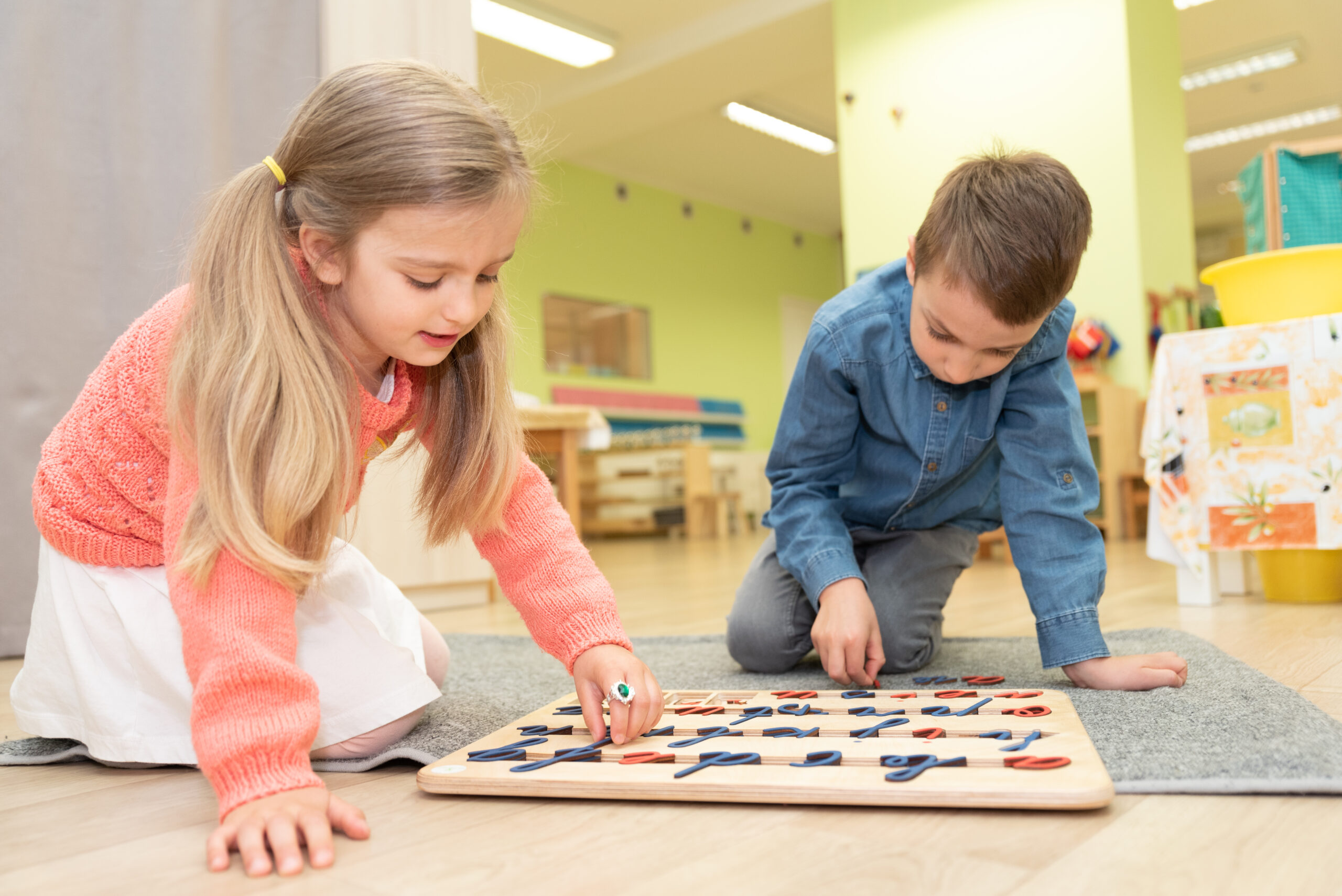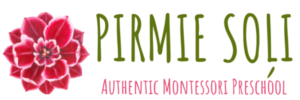It is a specially designed environment and a trained adult. Sounds so simple? And it is actually simple:

The Montessori environment is always set up and adapted to the child’s needs. The deepest essence of our philosophy is to let the adult understand how does the child’s brain work and how to maintain suitable environment for this little curious person.
Thus we have discovered, that education is not a teacher’s achievement, but is a natural process, that develops inside the person by itself. This happens not by listening to words, but by gaining experience, when the child works in his environment freely. The task of a teacher is not just to speak, but to prepare and arrange a series of motivating reasons in an environment, which is created especially for the child.
M. Montessori, The Absorbing Mind.
The most important place in the Montessori Children’s Home is the indoor environment. It provides various developmental exercises. Furniture that is suitable for the child’s height and the weight of furniture is made in accordance with the child’s strength, so that he can move it by himself. There are many objects made from natural materials – glass, porcelain, wood, metal. Various houseplants bloom everywhere and vases contain fresh flowers every day. The library reading room is comfortably furnished and equipped with light chairs, there are story books, pictures on the walls and an encyclopedia for older children. The books are carefully selected and neatly arranged on the shelves.
Speaking about physical development, it is important to allow the child to open up his thriving forces of nature inside him. It is equally important in his physical development to allow the child’s soul to function creatively, so that he can enrich himself by learning directly from living nature itself.
M. Montessori, Montessori method.
The outdoor environment is also an important part of Montessori preschool. The kindergarten allows children to get to know the plants and the growth cycle well. We also have exercise tools made of natural materials for crawling and rolling.
A properly equipped environment meets the child’s internal needs.
Trained adult
Our task is not to reward or punish a child. We are not here to disturb or guide a child. Adult role means:
- To be aware of the stages of the child’s development, to understand the child’s sensitive periods (when the child needs specific exercises to promote the development of exact skills needed at a particular moment);
- Watch the child;
- Create and maintain a suitable environment;
- To be an appropriate example for a child’s behavior;
- To create and maintain a suitable environment;
- To ensure a certain kind of freedom to gain life experience;
- Give time to the child to complete the tasks.
We must, therefore, relinquish from our role as a prison guard and we should take care to create an environment, where we as little as possible burden child with our supervision and instructions. The more this environment meets the needs of a child, the more limited our role as a teacher will be. However, we need to keep one thing in mind: giving a freedom to child does not mean neglecting or not paying attention to him. Our help must not take the form of passive indifference to any difficulties the child will face. On the contrary, we must support his development by providing prudent and loving care. Moreover, even in preparing a child-friendly environment, we have a serious task ahead of us, because to a certain extent we have to create a new world – the world of childhood.
M.Montesori, Child in the family
We, adults, are an essential part of a child’s environment. Therefore, in order to take care of our child, we must also learn ourselves. It is like buying an unknown plant. The new flower always comes with a small note, where is written how to take care of it. However, such a note is not attached to the child, so it is your own desire and responsibility to acquire knowledge and information.
Those, who today believe that materials are the key to an individual’s development, think that it is better to offer a large amount of materials without any system and without restriction. These theorists can be compared to those thinkers of the past, who believed that the best health can be achieved with unlimited eating. This parallel works great, because in both cases it is about human food; in one case it is food for the body and in the other it is for the mind.
M.Montesori, Child in the family
As parents and educators are always looking for the best parenting solutions, the Montessori method is becoming increasingly popular around the world. Latvia is not an exception. Montessori is not a registered trademark, so it is not possible to know for sure what exactly each school named after Montessori offers. This is the biggest problem. The popularity of the Montessori approach has created the opportunity to organize various Montessori courses, schools and parent training. How do I know if a signboard matches the content?
We have chosen AMI (Association Montessori Insternationale) as a reference point. The International Montessori Association was founded by Maria Montessori herself and is the organization responsible for the authenticity of the Montessori method, overseeing its high educational standards.
The first Montessori teachers in Latvia began their path in transformative education 30 years ago. They were opened and amazed at how the new approach was changing children’s lives. At that time, this method was more used for children with physical and mental health problems and other special needs, so the teachers obtained the Auxiliary School teachers diplomas in Munich. At that time, joint Montessori teacher courses took place in Munich. They had the opportunity to observe how the method is applied both – in work with ordinary children and with children, who had various special needs. At the beginning of the 1990s, such information was not available in Latvia. Educators made materials by hand and supported each other in exchanging experience and knowledge.
As the global recognition for alternative education grew, Latvian teachers became interested in new trends in their work. This could be called the Montessori school popularity boom.
In the period from 2005 -2020, more than 20 preschools, classes and various ‘’Montessori elements’’ courses named by Montessori were opened.
In 2018, the first AMI Teacher Assistant courses took place in Riga, and two more courses in the following years.
The Latvian Montessori Foundation and the Latvian Montessori Association work together to support the local community.
The Latvian Montessori Foundation and the Latvian Montessori Association provided translation and publishing of two Montessori books in Latvian – ‘’Absorbing Mind’’ and ‘’Child in the Family’’.

